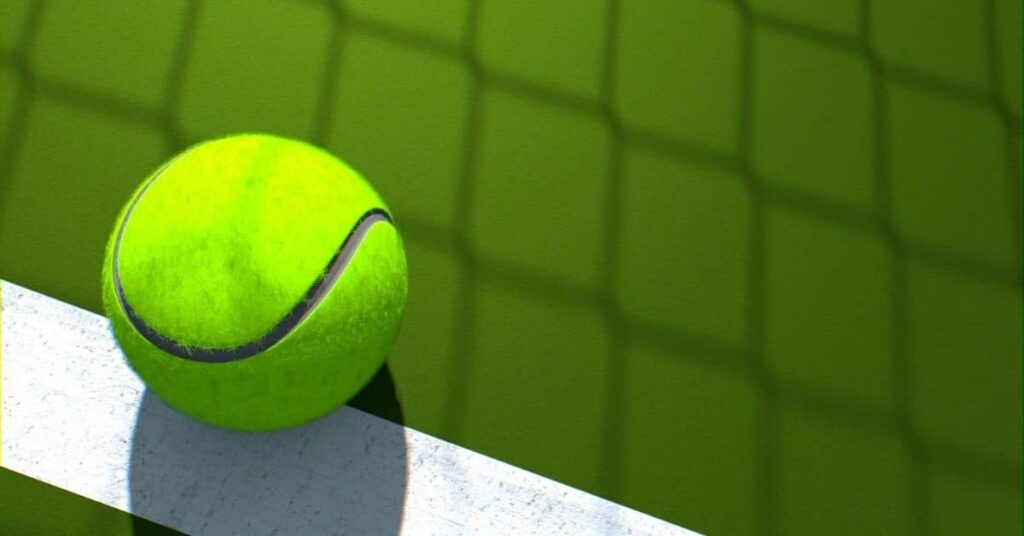I. Introduction
Benefits of playing tennis are endless. Tennis isn’t just a game played on a sunny court—it’s a complete lifestyle shift disguised as a sport. While it’s exhilarating to watch professional rallies on TV, the real magic begins the moment you step on the court yourself. In this article, we’ll explore how tennis improves your body and sharpens your mind. Plus, we’ll journey through its storied history, understand the basic rules, and guide you on how to get started. Let’s serve up the details.
II. A Brief History of Tennis
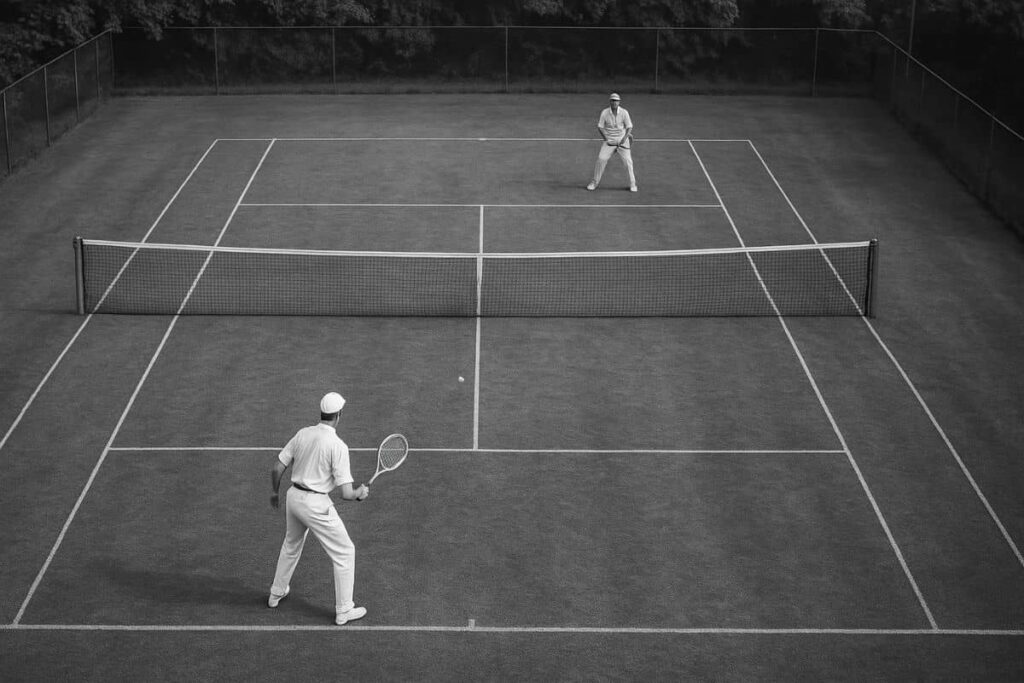
A. Origins of the Game
Initially, tennis began far from the manicured lawns we know today. In 12th-century France, monks playing a handball game called jeu de paume (“game of the palm”) bounced a ball against walls, striking it with their bare hands. As the sport gained popularity, players adopted gloves, then simple wooden bats, until racquets emerged in the 16th century. Meanwhile, the game migrated from humble monastery courtyards into French and English royal courts, earning its nickname “real tennis.”
Nobles like King Henry VIII of England became devoted players, building ornate indoor courts adorned with galleries, sloping roofs, and buttresses specifically designed to create unpredictable bounces. Even then, the benefits of playing tennis—physical exertion, mental focus, and social engagement—were evident, making it a favored pastime among the elite. You can explore more about this fascinating evolution in the History of Tennis on Wikipedia.
B. Evolution of Modern Tennis
Subsequently, the sport underwent a revolutionary transformation. In 1873, Major Walter Clopton Wingfield patented a set of portable rules for a game he dubbed “Sphairistikè,” adapting the French hand-court version for grass lawns in his Welsh estate. His 22-page rulebook standardized the court shape (an hourglass figure), net height, and scoring system—elements that underpin today’s lawn tennis.
The All-England Croquet and Lawn Tennis Club embraced these rules in 1877, hosting the first Wimbledon Championship with just 22 men’s entrants. From there, lawn tennis exploded in popularity across Victorian England, Europe, and the United States. Clubs sprang up in every major city, women began competing by the 1880s, and junior tournaments took hold, ensuring tennis reached players of all ages and genders.
C. Tennis Today
Fast forward to the 21st century, and tennis thrives as a truly global sport. The four Grand Slam tournaments—Wimbledon, the US Open, the French Open, and the Australian Open—draw millions of spectators and cash-rich prize pools. Technological advances like Hawk-Eye line-calling and high-tensile graphite rackets have accelerated play and reduced human error, while synthetic hard courts and cushioned clay surfaces offer varied challenges.
Beyond elite competition, grassroots programs have introduced tennis into schools, public parks, and community centres worldwide. Today’s mixed-reality training apps and online coaching platforms make it easier than ever to pick up a racquet and find hitting partners, ensuring tennis remains as dynamic and accessible now as when monks first squeezed their hands around a ball.
III. Understanding the Rules of Tennis
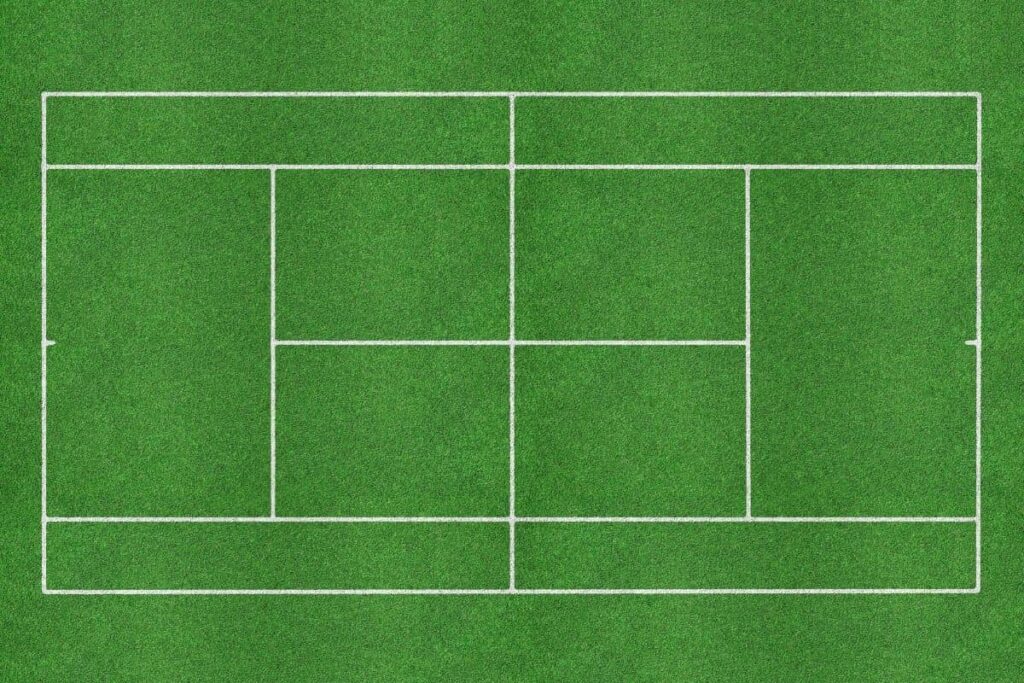
A. Basic Game Structure
First, tennis matches unfold in two main formats: singles and doubles. In singles, it’s you versus one opponent, covering the full width of the court—about 78 feet long and 27 feet wide. In doubles, two teams of two each play on a slightly wider court (36 feet), allowing for more angled shots and coordinated team strategy. Both formats offer unique challenges and rewards, contributing to the many benefits of playing tennis, such as improved agility, teamwork, and strategic thinking.
Next, every match breaks down into points, games, and sets. A player must win at least four points to claim a game, but you also need a two-point cushion—hence the familiar “deuce” and “advantage” moments. Winning six games (again by two) secures a set, and most amateur matches follow a best-of-three-sets format, while men’s Grand Slams use best-of-five. As you keep score, you’ll hear “love” (zero), “15,” “30,” and “40,” then “game.” This unique scoring adds drama and tradition to every rally.
B. Serve and Play
Every point kicks off with a serve. The server stands behind the baseline and tosses the ball overhead, aiming it diagonally into the opponent’s service box. You get two attempts: a clean “first serve” and, if that fails, a “second serve.” Fault twice, and you hand your opponent the point.
If your first serve clips the net but still lands in, that’s called a “let,” and you replay the serve without penalty. Once the serve lands, players engage in a rally: each side must return the ball before its second bounce and within the court’s boundary lines. A ball skimming the net and landing in play keeps the point alive, injecting sudden twists into exchanges.
C. Winning the Match
To win a set, you must reach six games with at least a two-game lead. If the set ties at 6–6, most tournaments now employ a tie-break: players race to seven points (win by two), trading serves every two points. This high-pressure mini game quickly resolves deadlocks.
However, formats vary. At Wimbledon’s final set, for instance, a longer tie-break at 12–12 decides the outcome, while some events drop tie-breaks entirely in deciding sets, extending play until someone wins by two games. Moreover, men’s Grand Slams typically play best-of-five sets, adding stamina and strategic endurance to the mix, whereas most women’s and mixed competitions stick to best-of-three.
By mastering these core rules—game structure, serving protocols, and match-winning criteria—you’ll navigate any court with confidence. From local club matches to elite tournaments, these foundations keep every contest fair, thrilling, and fundamentally tennis. Along the way, the benefits of playing tennis—such as enhanced physical fitness, mental resilience, and emotional discipline—become clear, making each match not just a competition, but a path to personal growth.
IV. How to Start Playing Tennis
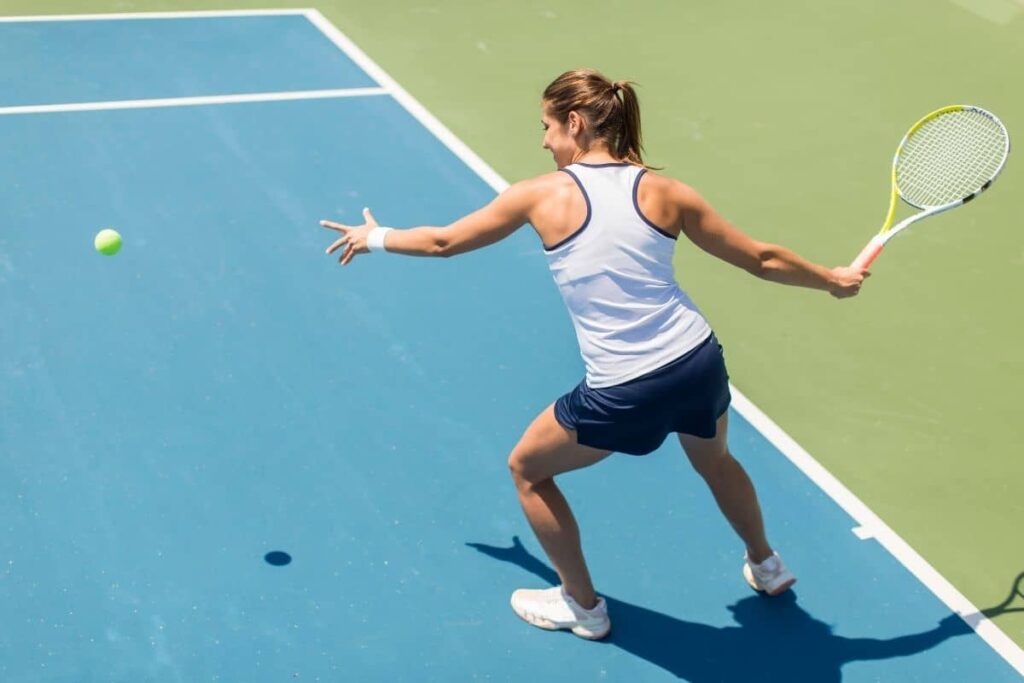
A. What You Need
First, assemble the essential gear to set yourself up for success. A quality racket that feels comfortable in your hand makes a world of difference—visit a local pro shop to test grip sizes and string tensions. Next, pick up pressurized tennis balls designed for your skill level (low-compression balls help beginners sustain longer rallies). Finally, slip into court-specific shoes that provide lateral support and non-marking soles; they protect your ankles and keep you agile on hard, clay, or grass surfaces. With the right equipment in hand, you’ll be better prepared to enjoy the many benefits of playing tennis—improved coordination, cardiovascular health, and mental focus—right from your very first match.
B. Learning the Basics
Once you’ve got your equipment, focus on mastering four fundamental strokes: the forehand, backhand, serve, and volley. Begin by practicing each motion slowly—this builds muscle memory and reinforces proper technique. Then, gradually increase speed and power while maintaining form. To accelerate learning, combine solo wall drills with guided instruction: watch reputable online tutorials, join group clinics, or book a session with a certified coach who can correct your grip, stance, and swing in real time.
C. Finding a Place to Play
With basics in hand, scout out courts near you. Many cities offer public parks with free or low-cost courts—perfect for casual play. If you prefer structured environments, local tennis clubs provide scheduled clinics, social mixers, and league matches. Additionally, leverage digital platforms like Meetup or PlayYourCourt to connect with fellow beginners or experienced hitting partners. By exploring multiple venues, you’ll discover the atmosphere that keeps you motivated.
D. Beginner Tips
Finally, adopt a growth mindset to accelerate your progress. Prioritize consistency over power: aim for clean contact rather than blasting winners from the baseline. Always warm up with dynamic stretches and light rallying to prevent injuries and prime your muscles. Respect court etiquette—call “mine” on overheads, retrieve stray balls quickly, and rotate serving turns courteously in multi-player drills. Above all, celebrate small victories, whether it’s sustaining a five-shot rally or delivering your first in-play serve. Small steps compound into major improvements, keeping you energized and eager for your next match. Embracing this mindset not only enhances your skills but also deepens the benefits of playing tennis—boosting confidence, fostering discipline, and promoting long-term physical and mental well-being.
V. Physical Benefits of Playing Tennis
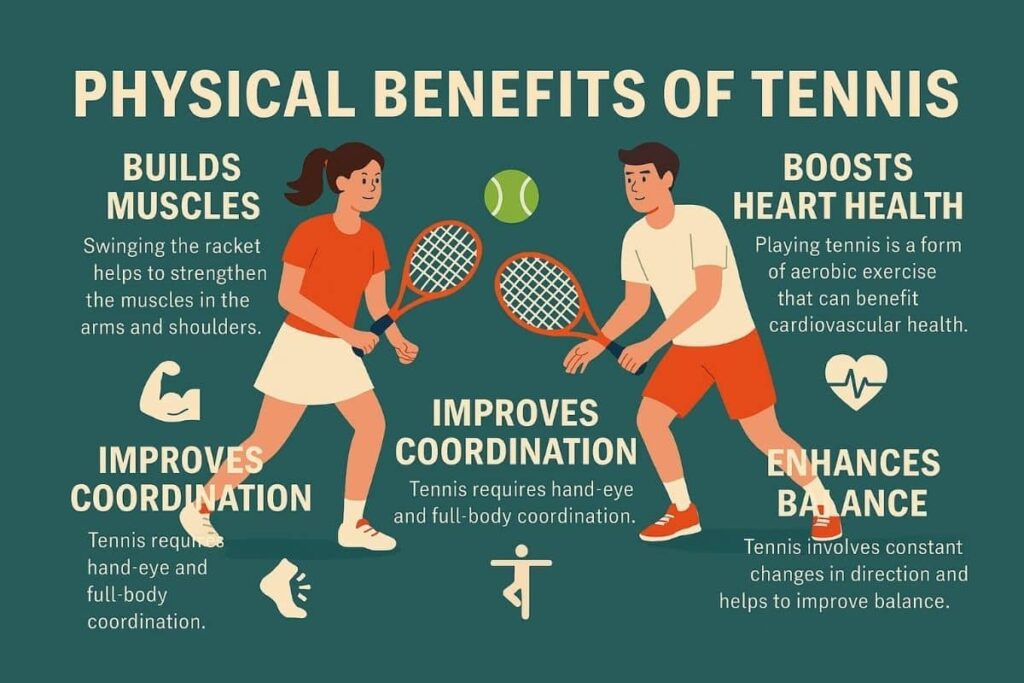
A. Cardiovascular Health
First and foremost, tennis delivers a dynamic cardiovascular workout. Every sprint, lateral shuffle, and change of direction elevates your heart rate, blending bursts of high-intensity effort with brief recovery periods—much like interval training. As you rally, your lungs work harder to supply oxygen to working muscles, which over time boosts VO₂ max (the gold-standard measure of aerobic fitness). Regular play can lower resting blood pressure, improve blood circulation, and shrink your risk of heart disease. Ultimately, your heart becomes more efficient, pumping stronger with each match you play.
B. Muscle Toning and Strength
Beyond cardio, tennis sculpts and strengthens your body. Each groundstroke engages your lower body—quads, hamstrings, glutes, and calves—through explosive pushes and quick stops. Meanwhile, volleys and serves target the upper body: shoulders (deltoids), chest (pectorals), back (latissimus dorsi), and forearms refine precision and power. Your core muscles (obliques and abdominals) fire constantly to stabilize your torso during twists, lunges, and overhead swings. Over weeks of consistent play, you’ll notice firmer legs, a stronger core, and more defined arms—all without a single hour spent on traditional weight machines. These physical transformations are just some of the many benefits of playing tennis, which also include improved coordination, endurance, and overall functional strength that supports everyday movement.
C. Weight Management
Tennis is a calorie-burning powerhouse. Depending on your intensity level and body weight, you can torch anywhere from 400 to 600 calories in an hour-long match. Because tennis alternates between high-energy sprints and recovery, it triggers the “afterburn” effect (excess post-exercise oxygen consumption), meaning you continue burning calories even after you’ve left the court. Combined with a balanced diet, this makes tennis an effective, engaging way to shed body fat and maintain a healthy weight—no boring treadmill required.
D. Flexibility, Agility, and Coordination
Finally, tennis sharpens your flexibility, agility, and hand-eye coordination, which adds to the physical benefits of playing tennis. Reaching for wide balls stretches your hamstrings and hip flexors, while lunges deepen ankle and calf flexibility. The sport’s rapid directional changes—side-to-side, forward-backward—hone your footwork and balance, reducing the likelihood of falls in everyday life. Simultaneously, tracking a fast-moving ball improves neural connections between your eyes, brain, and muscles, boosting reaction time and spatial awareness. As a result, you’ll find everyday movements—dodging obstacles, catching a falling object—feel smoother and more instinctive.
By weaving together intense bursts of motion, strength-building swings, and fine motor skill challenges, tennis offers a holistic workout that strengthens your heart, sculpts your muscles, and refines your athleticism. Lace up your shoes, hit the court, and let the game transform your body—one rally at a time.
VI. Mental and Emotional Benefits of Playing Tennis
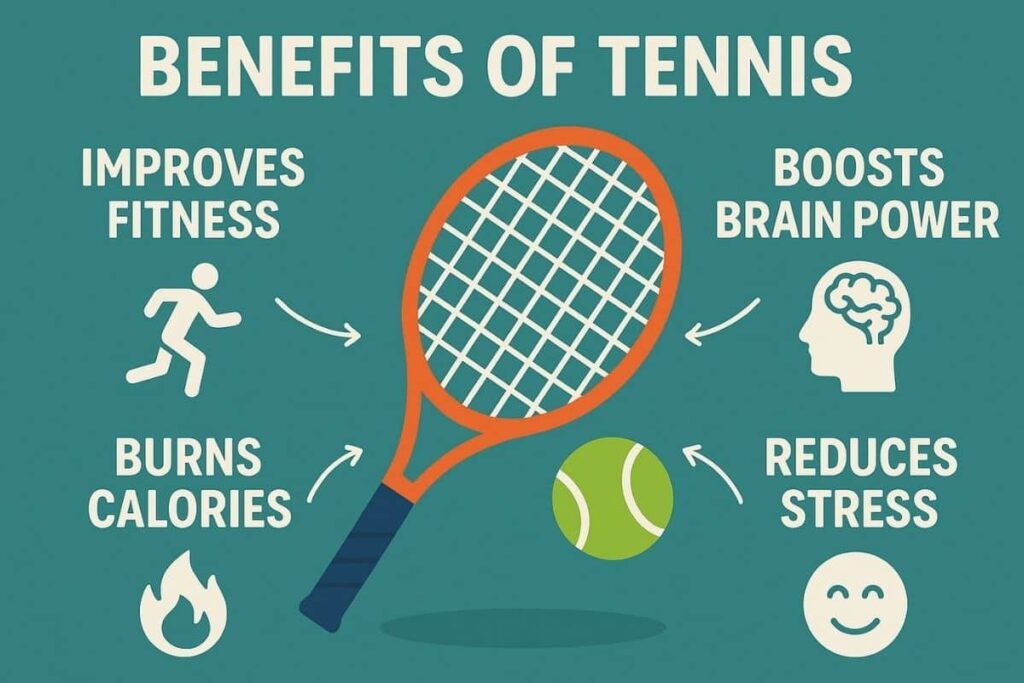
A. Stress Relief
One of the great benefits of playing tennis is that not only it provides great physical workout, tennis also provides an immediate outlet for stress. When you chase down a drop shot or power through a baseline rally, your brain floods with endorphins and dopamine—neurochemicals that counteract cortisol, the body’s primary stress hormone. Moreover, the laser focus required to track a fast-moving ball pulls you fully into the present moment. In effect, tennis doubles as a moving meditation: each swing and footwork pattern quiets racing thoughts and promotes mental clarity. After just one hour on court, you’ll often feel more relaxed, sleep more deeply that night, and face the next day’s challenges with a lighter mind.
B. Mental Agility
Beyond calming the mind, tennis sharpens mental processing in real time. Every point demands rapid-fire decisions: Should you attack with a cross-court forehand or defend with a deep slice? These split-second judgments strengthen your brain’s executive functions—working memory, attentional control, and cognitive flexibility. Additionally, you learn to recognize your opponent’s patterns (their favoured serve placement or signature backhand), building pattern-recognition skills that translate directly into improved situational awareness off the court. Over weeks of regular play, you’ll notice faster reaction times, quicker problem-solving, and a heightened ability to pivot when plans change.
C. Boosting Confidence and Discipline
Next, tennis fosters self-efficacy through tangible progress. Imagine nailing your first in-play serve or sustaining a ten-shot rally—that moment of personal triumph fuels confidence far beyond the court. As you set micro-goals (landing 60% of serves in the service box, mastering the split-step), you engage in deliberate practice: you plan, perform, receive feedback, and adjust. This cycle builds discipline, patience, and grit. Even losses become constructive feedback—each unforced error or missed volley teaches you resilience and equips you to tackle setbacks in work, relationships, or personal projects with a growth-oriented mindset.
D. Social Interaction
Finally, tennis delivers rich social and community benefits. Whether you pair up for doubles, compete in local leagues, or simply swap drills with a hitting partner, you forge genuine connections through shared effort and sportsmanship. High-fives after a winning point, laughter during a friendly rally, or supportive coaching from a teammate all strengthen social bonds and combat feelings of isolation. Furthermore, observing and practicing tennis etiquette—calling balls honestly, respecting line calls, shaking hands at the net—reinforces trust and mutual respect. Over time, your tennis circle often expands into friendships and professional networking, creating a support system that uplifts your emotional well-being on and off the court.
By blending endorphin-rich exercise, mental challenges, confidence-building milestones, and social bonds, tennis delivers a comprehensive emotional workout, adding to an already big list of benefits of playing tennis. Step onto the court, and you’ll discover that the game’s greatest benefits often take place between the ears—and heart—as much as within your muscles.
VII. Lifelong Value of Tennis

A. Accessible at Any Age
From swaddling-cloth tots swinging foam racquets to octogenarians volleying at sunset, tennis welcomes every generation. The benefits of playing tennis span a lifetime—enhancing physical fitness, mental sharpness, and social connection. Youth programs—like USTA’s “10 and Under Tennis”—use lower nets, smaller courts, and soft balls so kids build confidence and skills early on. In contrast, adult beginners find plenty of “social hours” or “round robins” at local clubs, offering relaxed, mixed-ability play. Meanwhile, senior circuits and adaptive tennis leagues empower older adults and players with mobility challenges to stay active, competitive, and socially engaged. At each life stage, tennis equipment and formats adapt, ensuring you never outgrow the game.
B. Low Injury Risk (with proper technique)
Unlike collision sports, tennis minimizes full-body impact. By emphasizing warm-ups, dynamic stretching, and gradual skill progression, you protect joints and muscles from strain. Proper footwear and court surfaces further cushion your knees and ankles, while lessons on grip, footwork, and swing mechanics dramatically reduce common overuse injuries—think tennis elbow or rotator-cuff irritation. Regular cross-training (yoga for flexibility, core workouts for stability) integrates seamlessly with tennis to correct muscle imbalances. Ultimately, you enjoy vigorous exercise without the heightened injury risk often associated with contact sports.
C. A Sport for Life
Tennis evolves with your goals and commitment. You might begin with casual weekend rallies, graduate to club leagues, then chase USTA rating milestones or local tournament victories. Should your passion wane, tennis remains a friendly outlet—perfect for weekend doubles or family “King/Queen of the Court” mini-matches. Additionally, countless adult clinics, coaching seminars, and online resources keep skill development fresh and engaging. Among the many benefits of playing tennis are its adaptability and longevity—it fosters lifelong habits like regular movement, strategic thinking, and community involvement, transforming a single-sport hobby into a sustainable, fulfilling lifestyle.
By remaining adaptable, low-impact, and endlessly scalable, tennis stands out as a sport you can truly play from cradle to retirement—and beyond.
VIII. Ready to Rally? Your Next Move
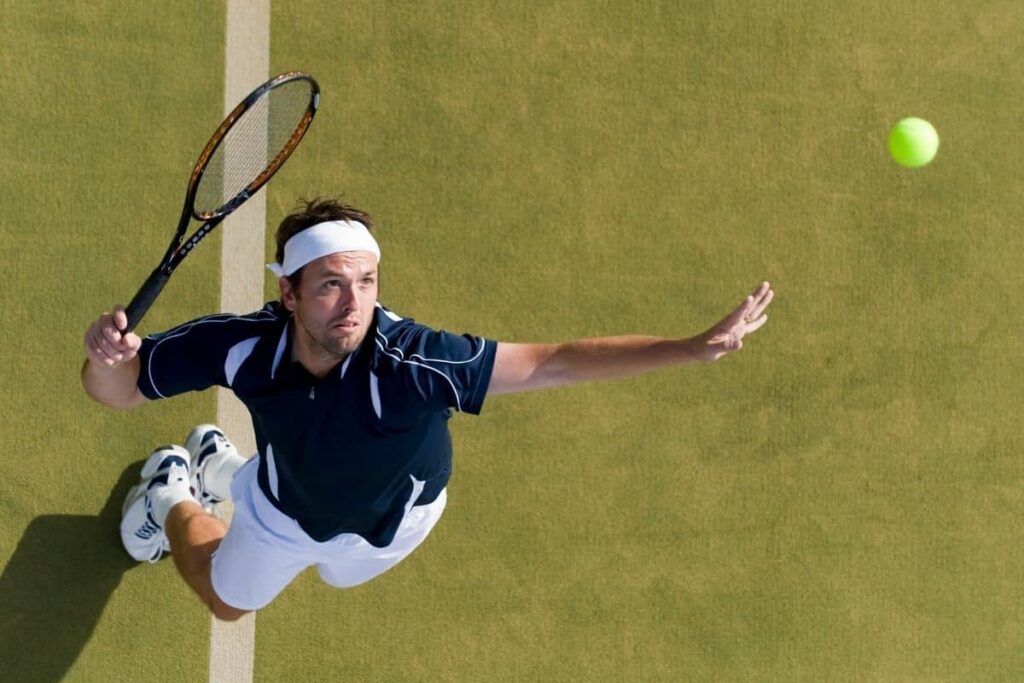
A. Summing Up Your Swing
By now, you’ve seen how tennis invigorates your body, sharpens your mind, and uplifts your spirit. The benefits of playing tennis are wide-ranging and profound: from cardiovascular gains and toned muscles to stress relief and social bonds, the court delivers a holistic workout no gym routine can match. Moreover, its adaptability—from red clay to synthetic grass—means every match feels fresh and every player finds their rhythm. In short, tennis isn’t just exercise; it’s a lifelong catalyst for growth.
B. Equipping Yourself for Success
Next, assemble your toolkit. First, choose a racket that balances weight and manoeuvrability—demo several models at a local pro shop until one feels like an extension of your arm. Then, invest in court shoes with solid lateral support and a non-marking sole. Finally, stock up on appropriate balls: beginners thrive with low-compression types, while intermediate players prefer standard pressurized balls. With gear dialled in, you’ll enjoy smoother swings, fewer mishits, and less risk of injury.
C. Mapping Your Tennis Journey
Now, set clear, achievable goals. Perhaps you’ll aim to sustain a five-shot rally within two weeks or land 60% of your serves in the service box by month’s end. Track progress in a simple practice journal: note date, duration, drills completed, and areas for improvement. As you hit each milestone, reward yourself—maybe a new grip tape or a fun doubles outing. This structured approach transforms abstract “improvement” into concrete victories.
D. Connecting with Fellow Players
Tennis thrives on community. Browse local clubs for social mixers or join digital platforms like Meetup and PlayYourCourt to find hitting partners at your level. If you crave friendly competition, sign up for a beginner league or weekend round-robin. Along the way, embrace tennis etiquette—call your own lines, lend balls to idle courts, and celebrate opponents’ great shots—to foster respect and camaraderie both on and off the court. One of the key benefits of playing tennis is this strong sense of connection—it not only builds friendships and social confidence but also creates a supportive environment that keeps you motivated and engaged in the game.
E. Start Today: Your Action Plan
Finally, take action. Block off 60 minutes in your calendar for your first practice session. Confirm court availability online or call the nearest public park. Warm up with dynamic stretches, rally slowly against a wall or partner, and experiment with basic drills (forehands, backhands, serves). Afterward, jot down your top three takeaways and plan your next visit. By diving in now, you’ll transform curiosity into momentum—and before you know it, you’ll be rallying with confidence and joy.
With gear in hand, goals in mind, and community at your back, you’re fully equipped to make tennis part of your life. So, grab your racket, book that court, and step onto the stage where every point brings progress. Let’s rally!
IX. Frequently Asked Questions (FAQ)
Q1: Is tennis a good sport for beginners?
Absolutely. You can tailor tennis to any fitness or skill level. Many clubs offer “10 & Under” programs that use smaller courts and low-compression balls, so new players experience longer rallies and quick successes. Even as an adult beginner, you’ll find group clinics or private lessons that break down strokes step-by-step. Start with basic footwork and gentle rallying—over time, your confidence and technique will grow naturally.
Q2: Do I need a coach to learn tennis?
Not necessarily, but a coach can accelerate your progress. A certified instructor spots and corrects flaws in your grip, swing, and stance before they turn into bad habits. If you prefer self-learning, combine high-quality online tutorials with mirror drills and video feedback (record and review your strokes). Group lessons or hitting partners also provide informal coaching: peers will praise what you do well and help you troubleshoot mishits. Ultimately, you decide whether to invest in one-on-one guidance or harness community resources and self-study. Either way, the benefits of playing tennis—such as improved technique, faster learning, and greater confidence—will follow as you stay consistent and engaged in your practice.
Q3: How often should I play to see benefits?
Aim for consistency over frequency. Playing tennis two to three times per week—sessions lasting 60 to 90 minutes—offers measurable gains in fitness, coordination, and mental focus. Between on-court workouts, schedule at least one full rest day to let muscles recover and adapt. On off-days, cross-train with yoga or light cardio to maintain flexibility and boost endurance. By balancing play with recovery, you’ll prevent injury and sustain motivation.
Q4: Can tennis help me lose weight?
Yes—substantially. A moderate-intensity tennis session burns roughly 400–600 calories per hour, depending on your weight and the pace of play. The sport’s natural “interval” pattern (short sprints followed by slower recovery) also triggers the afterburn effect, meaning you continue burning calories for hours afterward. Among the many benefits of playing tennis are its effectiveness for weight management, cardiovascular conditioning, and muscle toning—all achieved through an engaging, skill-based workout. For optimal results, pair your tennis routine with a balanced diet rich in lean protein, whole grains, and fresh produce. Tracking your food intake and hydration reinforces healthy habits and boosts your weight-loss journey.
Q5: What age is best to start playing tennis?
There’s no single “best” age—tennis adapts to every life stage. Children as young as four can begin with foam racquets and modified courts, building coordination and a love for movement. Adults often pick up tennis to boost fitness, relieve stress, or socialize—many start in their 30s, 40s, or beyond. Seniors benefit too: the sport’s low-impact nature (with proper warm-ups and footwork) preserves bone density, joint mobility, and mental sharpness. Wherever you are in life, tennis welcomes you.

